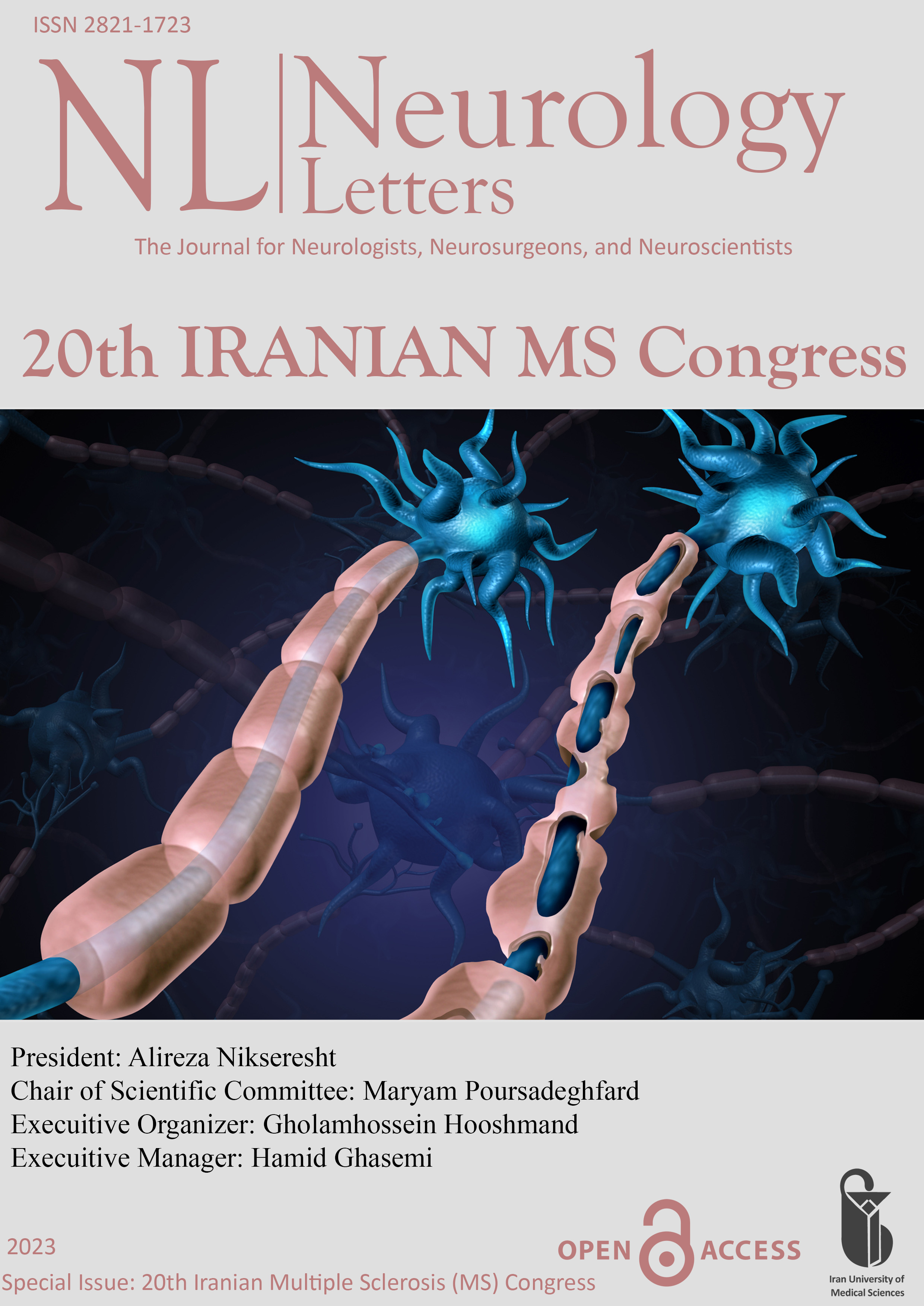MS Variants (ORP-38)
Document Type : Oral Presentation
Author
Department of Neurology, Kashan University of Medical Sciences, Kashan, Iran
Abstract
In this lecture, multiple sclerosis variants will be discussed, which include Solitary Sclerosis, Schilder's disease, Baló's concentric sclerosis, Marburg variant of multiple sclerosis.
Solitary sclerosis: Solitary Sclerosis (SS) is a progressive disorder caused by an isolated CNS demyelinating lesion, which may be located in different areas, including the spinal cord, the brainstem, or the cerebral hemispheres.
Although the patients with this disease do not meet the criteria for MS, in 13% of cases, one of their first-degree relatives suffers from MS, and in 50% of cases, there is an evidence of inflammation in the cerebrospinal fluid. In addition, conventional drugs used for MS, whether immunomodulatory or immunosuppressive, were shown to have no effect on the progressive course of this disease.
Some cases with different manifestations have been reported. For example, Sahraian, et al. in their study reported a 24-year-old patient who was initially presented with diplopia, which healed completely. The patient had only one lesion in the pontomedullary region; however, she has then developed a progressive course of quadriparesis and became completely incapacitated within 6 years.
When a patient with solitary sclerosis proceeds to fulfill the minimum MRI requirement for an MS, the diagnosis of single-attack MS may be used. If solitary sclerosis leads to a progressive phase, it is described as progressive solitary sclerosis.
Schilder's disease: Schilder's disease, also known as myelinoclastic diffuse sclerosis, is a rare and aggressive variant of multiple sclerosis that was first described in 1912 by Austrian physician, Paul Schilder. The original case involved a teenage girl who died after several months of progressive neurologic deficits and signs of increased intracranial pressure. Over the years more cases were added to the literature, mostly describing children and adolescents with large bilateral demyelinating cerebral lesions with some degree of corticosteroid responsiveness. An additional frequent feature is its monophasic disease course.
Baló’s concentric sclerosis: Baló’s concentric sclerosis (BCS) is a rare demyelinating disorder of the central nervous system (CNS) characterized by concentric layers of demyelination as detected by MRI or histopathology, and named after the Hungarian pathologist József Baló (1895-1979).
BCS is often regarded as a rare variant of multiple sclerosis (MS). While there are indeed similarities in terms of clinical presentation, BCS differs in several aspects from typical MS: lesion morphology (onion-like configuration characterized by concentric, alternating layers of demyelinated and myelinated tissue), lesion size (high frequency of large or ‘tumefactive’ lesions), and disease course (often monophasic and self-limiting rather than relapsing-remitting) and disease severity (not uncommonly fatal at first occurrence). This suggests that BCS and MS may be distinct disorders.
Marburg’s variant of multiple sclerosis: is a malignant form of MS that evolves rapidly leading to death or severe disability. Otto Marburg first described this severe form of MS in 1906,
Patients usually present with focal neurological deficits or seizures. They often show acute neurological deterioration and succumbs to death in few weeks to months due to brainstem involvement.
The Marburg variant of multiple sclerosis which accounts for <4% of the total incidence of MS cases mostly affects children and young. It is a fulminant form of MS, featuring an acute onset of severe neurological deficits often resulting in death within weeks to months .Histology usually shows extensive demyelination as well as necrosis, which often involves vital areas like the brainstem. Synonyms for Marburg MS, which is the most aggressive variant of the disease, include malign, acute fulminant, acute malignant, and rapidly progressive MS. Its most important differential diagnoses are acute disseminated encephalomyelitis, Balo’s concentric sclerosis, and Schilder’s diffuse sclerosis.
Keywords
 Neurology Letters
Neurology Letters
